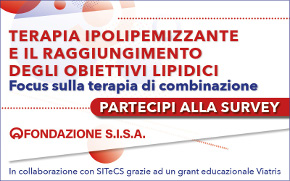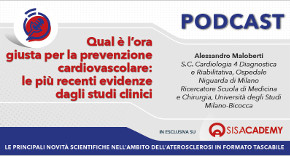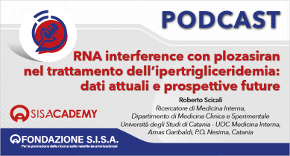 Rivista in lingua italiana
Rivista in lingua italiana
riservata ai Soci SISA
Ultimo numero:
Anno 16 • N.1/2025
SISANews
Limiti degli algoritmi per la stima del rischio cardiovascolare
In una esaustiva revisione critica, Cooney e Coll affrontano il tema della stima del rischio cardiovascolare. Gli attuali mezzi per la stima appaiono utili, ma insufficienti e l'aggiunta dei fattori di rischio emergenti a quelli classici contemplati nella maggior parte degli algoritmi è troppo spesso irrilevante. Il problema della corretta classificazione, soprattutto per i soggetti a rischio intermedio rimane per il momento irrisolto e porta troppo spesso a sottostimare o a sovrastimare il rischio cardiovascolare reale con conseguenti errori nelle scelte terapeutiche.
![]()
Value and limitations of existing scores for the assessment of cardiovascular risk: a review for clinicians
Cooney MT, Dudina AL, Graham IM.
J Am Coll Cardiol 2009;54:1209-27
Atherosclerotic cardiovascular diseases (CVDs) are the biggest causes of death worldwide. In most people, CVD is the product of a number of causal risk factors. Several seemingly modest risk factors may, in combination, result in a much higher risk than an impressively raised single factor. For this reason, risk estimation systems have been developed to assist clinicians to assess the effects of risk factor combinations in planning management strategies. In this article, the performances of the major risk estimation systems are reviewed. Most perform usably well in populations that are similar to the one used to derive the system, and in other populations if calibrated to allow for different CVD mortality rates and different risk factor distributions. The effect of adding "new" risk factors to age, sex, smoking, lipid status, and blood pressure is usually small, but may help to appropriately reclassify some of those patients who are close to a treatment threshold to a more correct "treat/do not treat" category. Risk estimation in the young and old needs more research. Quantification of the hoped-for benefits of the multiple risk estimation approach in terms of improved outcomes is still needed. But, it is likely that the widespread use of such an approach will help to address the issues of both undertreatment and overtreatment.
J Am Coll Cardiol 2009;54:1209-27

Area Soci
Eventi
39° Congresso Nazionale
 39° Congresso Nazionale
39° Congresso NazionaleRoma, 23-25 novembre 2025
Save the date




 Spring Meeting Gruppi Giovani SID, SIGG, SIIA, SIMI, SIPREC, SISA
Spring Meeting Gruppi Giovani SID, SIGG, SIIA, SIMI, SIPREC, SISARimini, 6-8 aprile 2025
[continua a leggere]
 SISA LIPID ACADEMY - Corso avanzato di lipidologia clinica
SISA LIPID ACADEMY - Corso avanzato di lipidologia clinicaModena, 4-5 Luglio 2024
[continua a leggere]Giornale Italiano Arteriosclerosi
HoFH today
 Rivista Italiana della
Rivista Italiana della
Ipercolesterolemia
Familiare Omozigote
Anno 6 • N.1/2024
Rivista NMCD
Diateca
[continua a leggere]
[continua a leggere]
Newsletter
il vostro indirizzo di posta elettronica
Progetto LIPIGEN

Nuovo sito dedicato al Progetto LIPIGEN
Progetto LIPIGEN - Vecchio portale
E' necessario essere loggati come utente
Lipigen per poter accedere alla pagina
PROject Statin Intolerance SISA
PROSISA – PROject Statin Intolerance SISA
E' necessario essere loggati come utente
PROSISA per poter accedere alla pagina
GILA - Lipoprotein Aferesi
Gruppo Interdisciplinare Lipoprotein Aferesi
(Accesso Gruppo GILA-Lipoprotein Aferesi)
E' necessario essere loggati come utente del Gruppo GILA per poter accedere
Gruppo Interdisciplinare Lipoprotein Aferesi
(Documentazione ad accesso libero)
Pagina informativa per medici e pazienti










